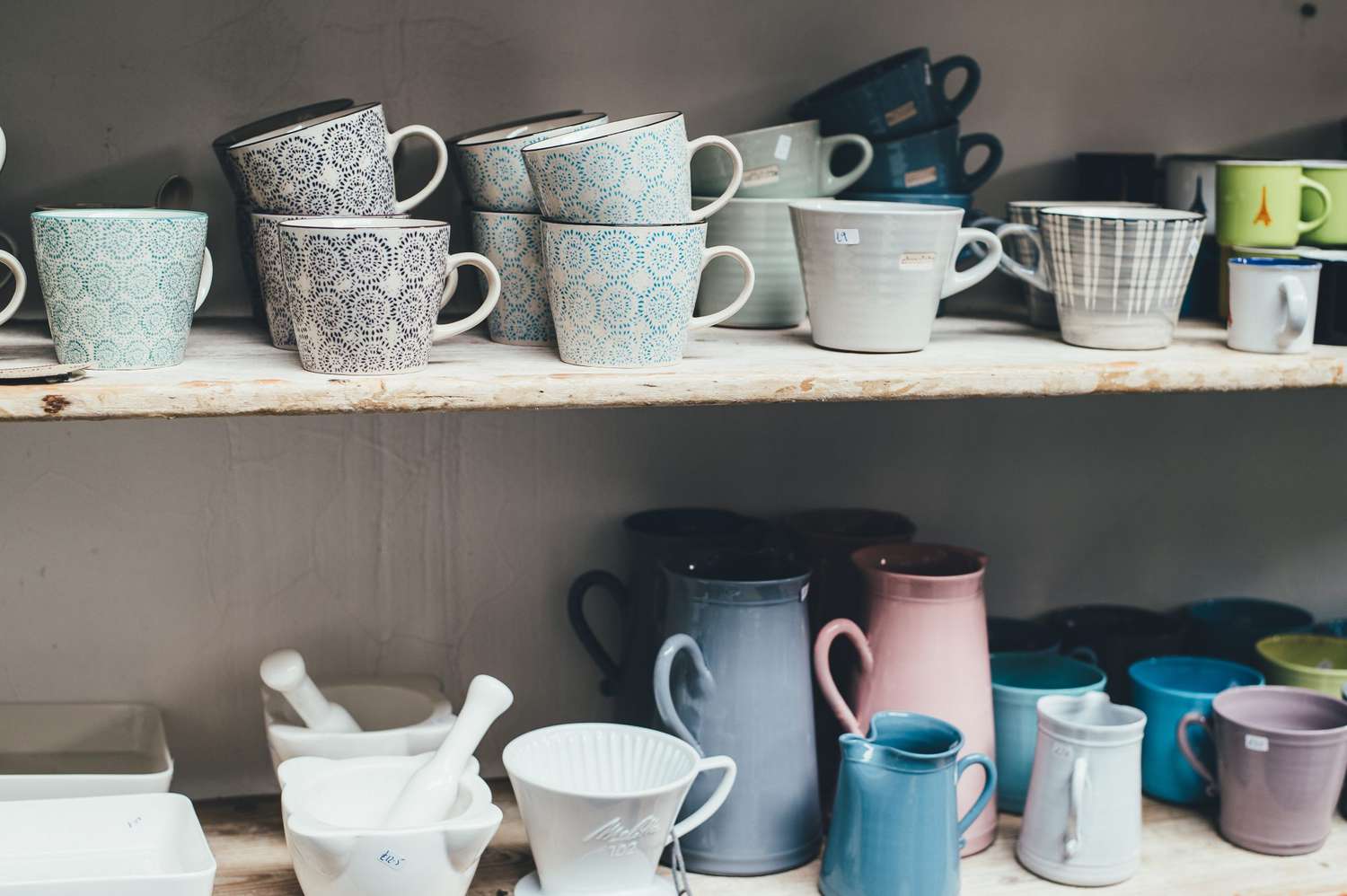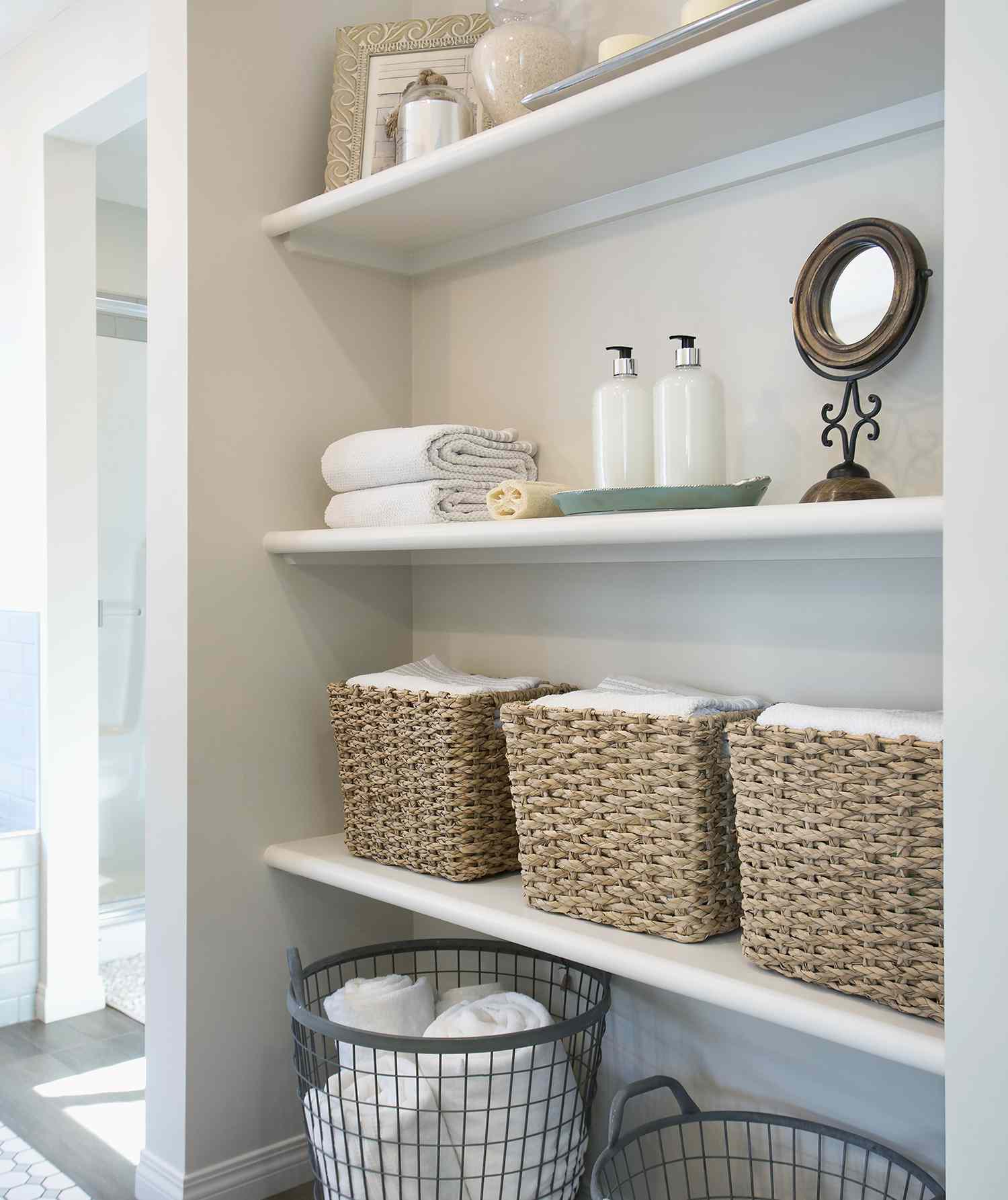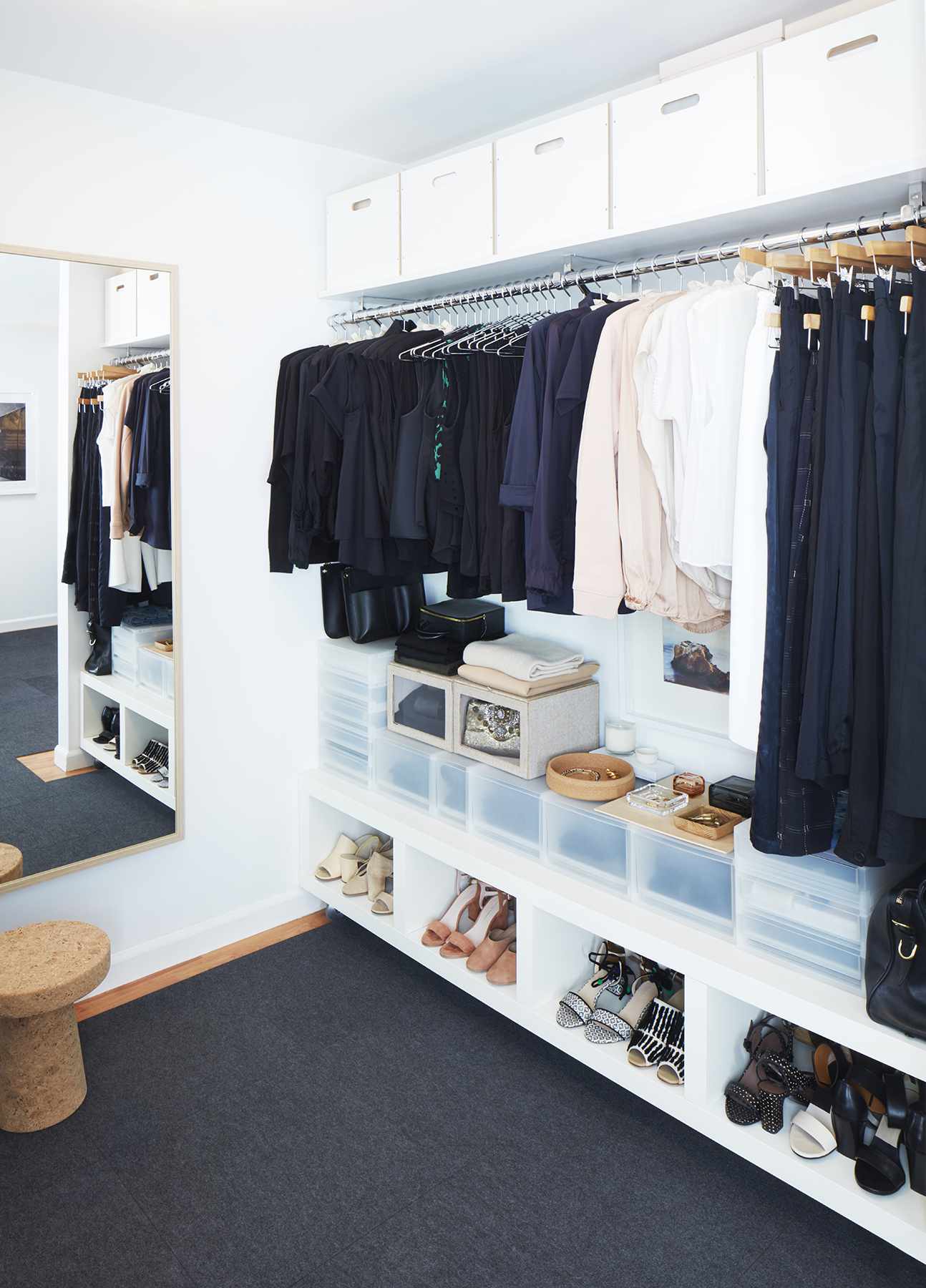Making Your Categories Too Specific
The second step in the organizing process (after sorting through your belongings), is to categorize everything you own. “A common mistake we see during this phase is that people make the categories too specific,” reports Hagmeyer. When the categories are so narrow, it can be difficult to keep up with the system you’ve created and you’ll end up tossing items in any container you see.

Smart Solution: When sorting, Hagmeyer recommends keeping in mind the mantra “broad is best,” and avoiding the tendency to create narrow categories. “An example of this would be in a children’s space labeling one bin cars, and another trucks, and another planes. Instead, name one bin auto!” she says.
Inconveniently Placed Cleaning Supplies
Sure, you could store all your cleaning supplies on the service porch, in the garage, or under the kitchen sink, but if your home is large or has multiple floors, that’s a lot of trekking back and forth come housework day. Instead, keep cleaning supplies in or near the room where they are actually used: toilet and tub cleaner under the bathroom sink, kitchen-cleaning products under the kitchen sink, and general household cleaners stashed in a tote that’s easy to grab-and-go when you need it.

“Just in Case”
Many homes have closets and cabinets loaded with dusty items being stored “just in case” they are ever needed. But unless that item is actually used at least once a year—holiday decorations, for example, or seasonal sporting goods—it’s actually just taking up space that could be put to better use storing things you do need and use regularly. Be honest with yourself, and sell or donate those “just in case” items that you know deep down inside are never going to be needed.

Stacking Dishware Way Too High
As the founder of the organizing team Bneato Bar, Beth Penn is a pro at streamlining everything from entryways to email inboxes. Oftentimes, the smallest tweaks that clients would never think to make themselves end up being the most transformative. Case in point: Penn recommends never stacking dishes or cups too high in a kitchen cabinet. “They can chip or wobble,” she warns. While the cabinet may appear tidy upon first glance, if you end up needing the plate all the way at the bottom of the stack, you’ll quickly learn how impractical this system is.

Putting Off What You Should Do Today
Organizing your home is never a “one and done” activity. It requires regular—usually daily—attention to putting things where they belong, getting rid of belongings that no longer serve a purpose in your life, and adapting your methods as necessary to maintain a clean, functional, and attractive space. Luckily, for most people it only takes a few minutes a day to accomplish this. Don’t make the common mistake of procrastinating on your organizing efforts, as all too quickly what was a small task becomes a major project that is hard to face, thus leading to further procrastination.

Cramming Every Product into the Medicine Cabinet
If you own a massive stash of makeup and products, trying to fit them all into a narrow medicine cabinet isn’t going to work. If a bottle of hairspray or a tube of toothpaste falls out every time you open the door, take it as a sign that you’re overloading this storage unit.

Smart Solution: “Try adding open shelving nearby… and a big basket with a lid to hide things like a hair dryer and hair products,” Penn recommends. Show off the prettiest bottles and perfumes on the open shelving, and use the closed basket for any products you’d like to hide out of sight.
Neatly Stacked Piles of Clutter
Just because you’ve neatly stacked all of that unfiled paperwork on your desk, the multiple plastic storage containers sans lids in your cupboard, or the magazines you definitely intend to read “one of these days,” that doesn’t actually count as organized. You’ve merely made clutter less overwhelming. Instead, file or toss those papers, read or dispose of the magazines, and get rid of excess storage containers, along with any other items you’ve “organized” by stacking.

Overloading on Organizers
Far too many people become so enthusiastic about the idea of organizing that they hurry out and buy an overload of boxes and bins which wind up becoming clutter themselves. If your garage, kitchen cabinets, or coat closets hold a plethora of storage boxes packed into other storage boxes that you’re holding onto in case you need them at some indeterminate date, then it’s time to let those extra organizers go.

Not Cleaning Clothes Before Storing Them
“The only way to keep moths and other pests at bay is to clean your clothes and linens before storing them for any length of time,” says Cattano. If there are traces of food and scents on the fabric, bugs will find a way to get to them, and the last thing you want is to open a storage bin to find a moth has devoured your favorite sweater. “I’ve seen moths in airtight containers loaded with cedar chips,” warns Cattano. “Bugs will get wherever they want, so don’t invite them.”

Bedroom Closets that Don’t Work For You
A well-organized bedroom closet definitely speeds up your mornings, but only if that organization works for your actual lifestyle and needs. Just because you admire a gorgeously organized closet on Pinterest or Instagram doesn’t mean that’s the best solution for your own home. Sure, your dressiest shoes and garments might look spectacular up front and on display when you open the closet door, but if you rarely wear those items, it makes more sense to store them towards the back of the closet, and instead move the shoes and clothing you wear most often up front where they are easily accessed.

Confusing Clean with Organized
Ideally, clean and organized go together, but one does not necessarily indicate the other. It’s entirely possible to have a clean home that’s very cluttered, or an organized home that’s actually grungy. However, once you have your space organized properly, it does become a lot easier to keep it clean, as you no longer need to maneuver around clutter. Still, don’t confuse the two; you need to both organize your belongings and clean your home on a regular basis.

Inconveniencing Yourself
Your kitchen counters might look Instagram worthy without the coffee maker, toaster, or knife block out on display, but if you use those things every day, it makes more sense to keep them out than to put them away and pull them back out each and every morning. Instead, store small appliances and kitchen gadgets that are used on occasion, while leaving out only those items that truly are used regularly.

Too Much Stuff
It’s possible to have a well-organized home that still feels cluttered. No matter how large your space, it has a maximum storage capacity beyond which you enter the “too much stuff” zone. The solution is simple, although not necessarily easy; you need to be honest with yourself about each and every item residing in your home. If it isn’t useful, beautiful, or loved, it’s taking up space best used by something that does fit those requirements.

source: bobvila, realsimple







